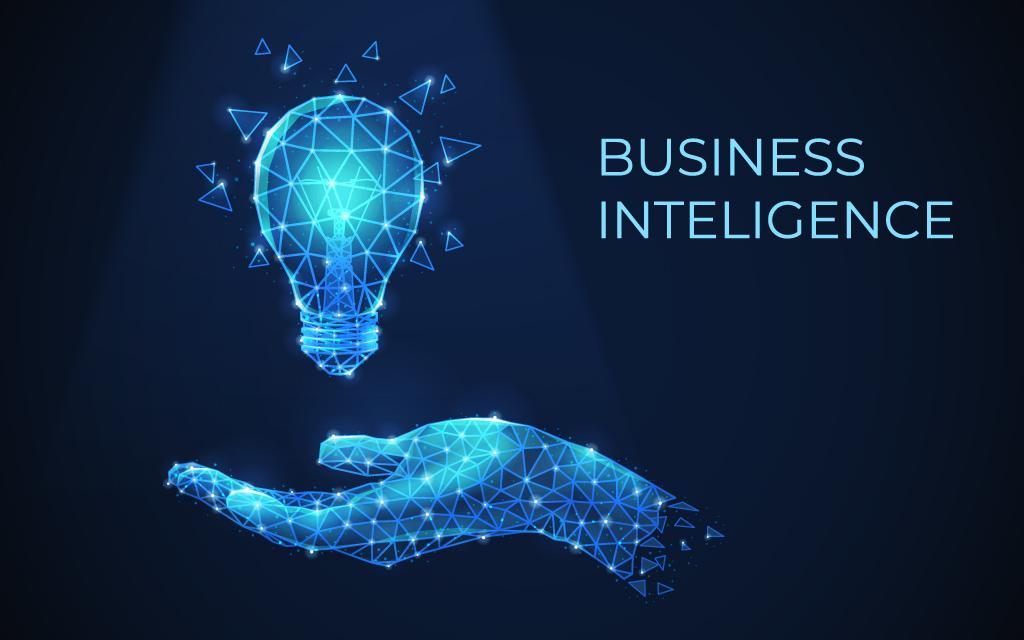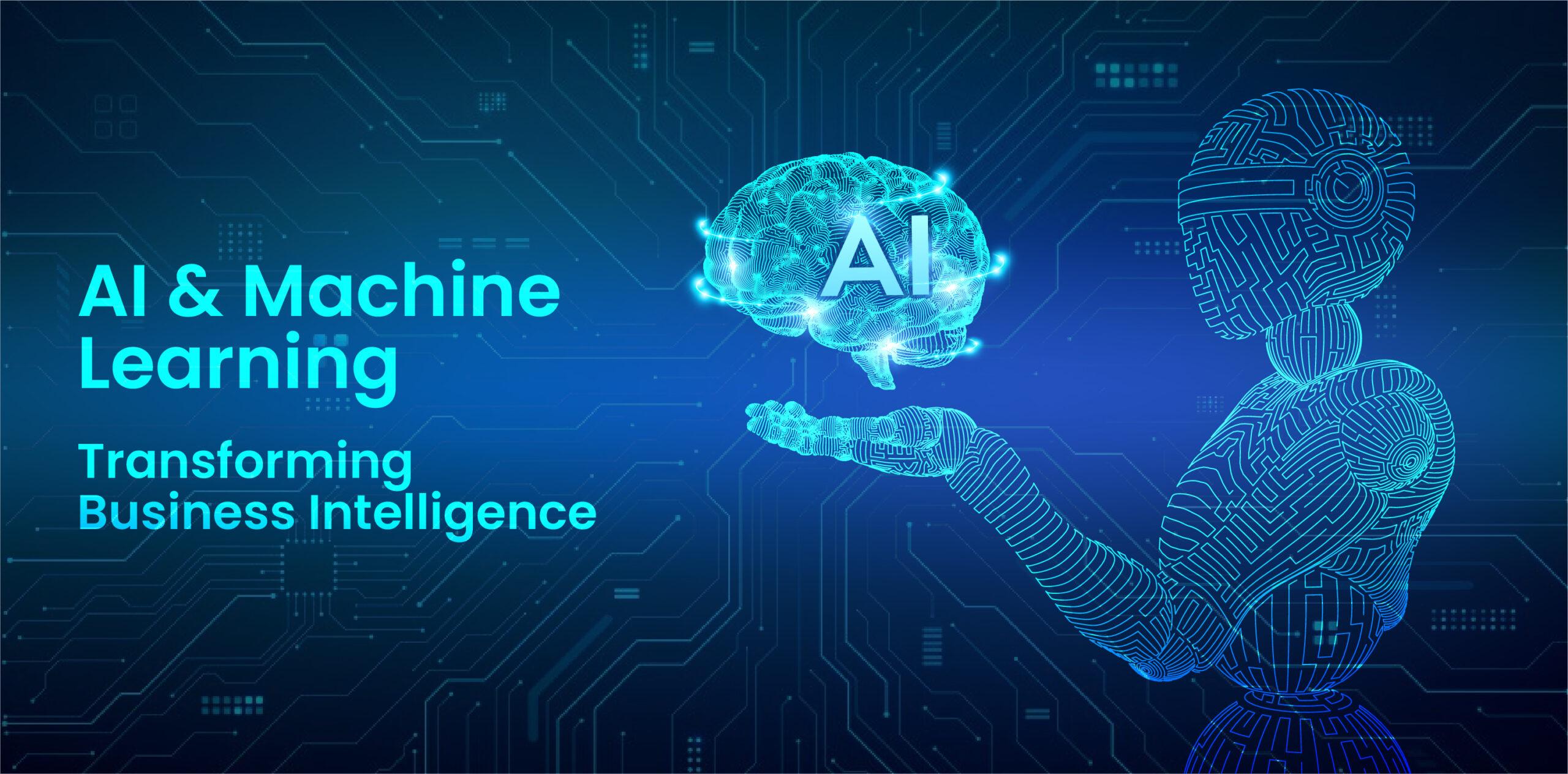Power of AI and Machine Learning in Business Intelligence
Table of Contents
In today’s hyper-connected world, data is a business’s most valuable asset. However, raw data by itself holds little value without the tools and strategies to interpret it effectively. This is where Artificial Intelligence (AI) and Machine Learning (ML) come into play, revolutionizing the field of Business Intelligence (BI) and reshaping how companies extract value from their data.
AI and ML are not just buzzwords; they are transformative technologies that enable businesses to analyze massive datasets, discover patterns, and make data-driven decisions faster and more accurately than ever before. By integrating AI and ML into their BI strategies, companies can uncover previously inaccessible insights, streamline operations, and gain a significant competitive edge.
This article explores how AI and ML are revolutionizing business intelligence, the benefits they offer, real-world use cases, and steps for successful implementation.
Understanding Business Intelligence (BI)

Business Intelligence refers to the technology-driven process of collecting, analyzing, and presenting business data to support decision-making. Traditional BI systems rely heavily on historical data, manual reporting, and static dashboards. While these tools have served organizations well, the increasing complexity and volume of data have rendered them insufficient for modern needs.
AI-powered BI takes the next step by incorporating automation, real-time analysis, and predictive capabilities. These advancements allow businesses to not only understand what has happened but also predict what will happen and prescribe the best course of action.
What Is Artificial Intelligence and Machine Learning?
Before diving deeper, it’s important to define the key concepts:
- Artificial Intelligence (AI): A branch of computer science focused on creating systems capable of performing tasks that typically require human intelligence. This includes problem-solving, decision-making, language understanding, and visual perception.
- Machine Learning (ML): A subset of AI that enables systems to learn from data and improve their performance over time without being explicitly programmed.
- Deep Learning: A more advanced subset of ML, using neural networks with many layers to simulate human brain functions in processing data, especially useful in image and speech recognition.
These technologies work together to enable machines to analyze vast datasets, learn from patterns, and offer intelligent insights — capabilities that are game-changers for business intelligence.
How AI and ML Are Transforming Business Intelligence

1. Enhanced Data Processing and Analysis
One of the biggest strengths of AI in BI is its ability to process enormous volumes of data at incredible speeds. Traditional BI tools can struggle with data overload, but AI algorithms can swiftly parse through structured (like spreadsheets) and unstructured data (like emails, videos, or social media content).
With AI, data processing is not only faster but also more efficient, allowing companies to analyze real-time data streams and make agile decisions.
2. Predictive and Prescriptive Analytics
AI doesn’t just tell businesses what happened — it predicts what’s likely to happen next.
- Predictive Analytics: Uses historical data to forecast future trends, such as sales, customer behavior, or market fluctuations.
- Prescriptive Analytics: Goes a step further by recommending actions based on predictive models. For example, it might suggest inventory adjustments based on expected demand.
These capabilities help businesses stay proactive, not just reactive.
3. Automated Insights and Reporting
AI-powered BI tools can automatically detect patterns, outliers, and correlations without human intervention. Instead of manually creating reports, users can receive real-time insights generated by algorithms that continuously learn and improve.
Some systems even use Natural Language Generation (NLG) to turn data into written reports, making insights more accessible across departments.
4. Natural Language Processing (NLP)
Through NLP, BI platforms become more user-friendly. Business users no longer need to be data scientists to interact with analytics tools. They can ask questions in plain language (e.g., “What were last month’s top-selling products?”) and receive understandable answers or visualizations.
This democratizes data, allowing more stakeholders to participate in data-driven decision-making.
Key Benefits of AI and Machine Learning in Business Intelligence

1. Faster Decision-Making
Real-time analytics powered by AI means that businesses can act on the most up-to-date information, improving responsiveness and reducing delays in the decision-making process.
2. Greater Accuracy
ML models continuously learn from data, refining their predictions over time. This results in more accurate forecasts, fewer errors, and better business outcomes.
3. Cost Efficiency
Automation reduces the need for manual data analysis, freeing up human resources for strategic tasks. Over time, this leads to substantial cost savings and more efficient use of internal talent.
4. Personalization at Scale
AI can tailor content, offers, and customer journeys based on behavioral data. This level of personalization enhances customer experience and drives loyalty and revenue.
5. Competitive Advantage
By leveraging AI and ML, companies can gain insights that competitors may miss, enabling faster innovation, better market positioning, and smarter strategies.
Real-World Applications of AI in Business Intelligence
1. Customer Service Enhancement
AI chatbots and virtual assistants provide 24/7 customer support, handling common queries and freeing up human agents for complex issues. These tools also collect valuable customer data for further analysis.
2. Sales Forecasting
Predictive analytics helps sales teams understand upcoming trends, set realistic goals, and adjust strategies based on likely future scenarios.
3. Fraud Detection
In sectors like finance, AI systems monitor transactions in real-time, flagging anomalies that could indicate fraud, far faster than manual review processes.
4. Supply Chain Optimization
ML algorithms analyze demand, supplier performance, and logistics data to improve inventory management, reduce delays, and lower costs.
5. Human Resource Management
AI can assist in recruitment by screening resumes, analyzing applicant data, and predicting candidate success. It also helps HR teams monitor employee engagement and retention trends.
Implementing AI and Machine Learning in Business Intelligence
Successfully integrating AI and ML into your BI framework involves a multi-step approach:
1. Assess Business Needs
Identify the specific challenges or opportunities AI can address — whether it’s faster reporting, better customer insights, or improved risk detection.
2. Evaluate Current Infrastructure
Determine whether your existing BI tools can support AI integration. You may need to upgrade or adopt new platforms that are AI-ready.
3. Prepare and Cleanse Data
AI models rely on high-quality data. Ensure your data is accurate, complete, and well-structured. Invest in tools for data integration and cleaning if necessary.
4. Choose the Right Tools
Select AI/ML platforms that align with your goals. Consider solutions like Microsoft Power BI with AI capabilities, Tableau, Qlik, or platforms like Nexis+ AI™ for advanced analytics.
5. Build and Train ML Models
Use historical data to train your machine learning models. Involve data scientists and BI experts to choose the right algorithms and validate model performance.
6. Implement and Monitor
Deploy AI solutions into your BI environment. Regularly monitor outputs to ensure accuracy and make adjustments as the system learns.
7. Foster a Data-Driven Culture
Educate employees on how to use AI tools and make data-based decisions. Encourage collaboration between departments and promote data literacy.
Overcoming Challenges in AI Implementation
1. Data Privacy and Security
Ensure that your AI systems comply with data protection regulations. Use secure infrastructure and encrypt sensitive information.
2. Integration Complexities
Integrating AI with legacy systems can be difficult. Work with BI consultants to smooth out the transition and ensure compatibility.
3. Lack of In-House Expertise
AI is a specialized field. If your team lacks expertise, consider hiring specialists or partnering with a business intelligence consulting service.
4. Resistance to Change
As with any new technology, change management is essential. Engage stakeholders early, provide training, and highlight the benefits to gain buy-in.
The Future of AI in Business Intelligence
As AI continues to evolve, its impact on BI will only grow. Emerging trends include:
- AutoML (Automated Machine Learning): Making ML more accessible to non-experts.
- Conversational BI: Allowing users to interact with data via voice or chat.
- Edge AI: Analyzing data at the source (e.g., IoT devices), reducing latency.
- Explainable AI (XAI): Making AI decisions more transparent and trustworthy.
These innovations will further democratize business intelligence and help companies of all sizes harness the full power of their data.
Conclusion
Integrating AI and ML into Business Intelligence marks a pivotal moment for businesses worldwide. By enabling faster, smarter, and more accurate insights, AI transforms data into a powerful strategic asset. From enhancing customer service to optimizing supply chains, the potential applications are vast and varied.
To fully benefit from these advancements, businesses must not only adopt the right tools but also cultivate a culture that values data and innovation. Partnering with BI consulting firms, investing in data infrastructure, and embracing continuous learning will position organizations for long-term success.
The future belongs to those who harness data intelligently, and AI is the key to unlocking that potential.
Frequently Asked Questions (FAQs)
1. What’s the difference between traditional BI and AI-powered BI?
Traditional BI focuses on historical reporting, while AI-powered BI offers real-time insights, predictive analytics, and automation for smarter decision-making.
2. How does AI improve data quality?
AI detects and corrects errors, identifies anomalies, and ensures data consistency, crucial for accurate analytics.
3. Is AI in BI only for large enterprises?
No. SMEs can also benefit from AI tools that are scalable and cost-effective. Many platforms offer flexible pricing and easy integration.
4. Can non-technical users work with AI-powered BI tools?
Yes. Thanks to NLP and user-friendly interfaces, many AI tools are designed for business users with no coding experience.
5. What is the role of BI consulting services?
BI consultants guide implementation, provide expertise, and help customize solutions that align with specific business goals.
6. How long does it take to implement AI in BI?
Timelines vary, but with the right tools and support, initial AI-driven BI systems can be operational within a few weeks.


